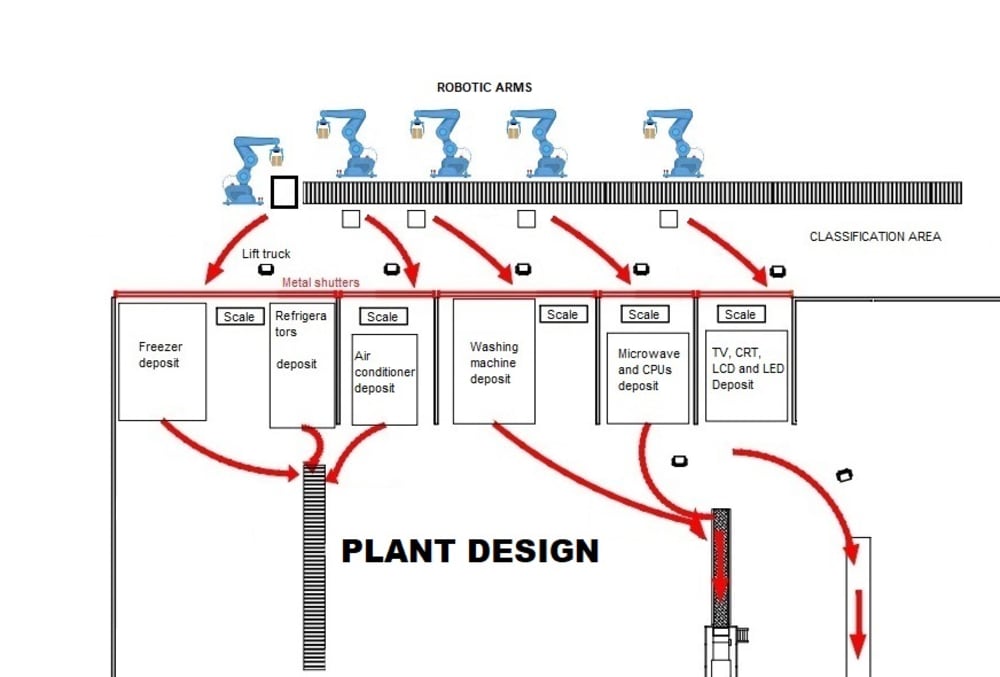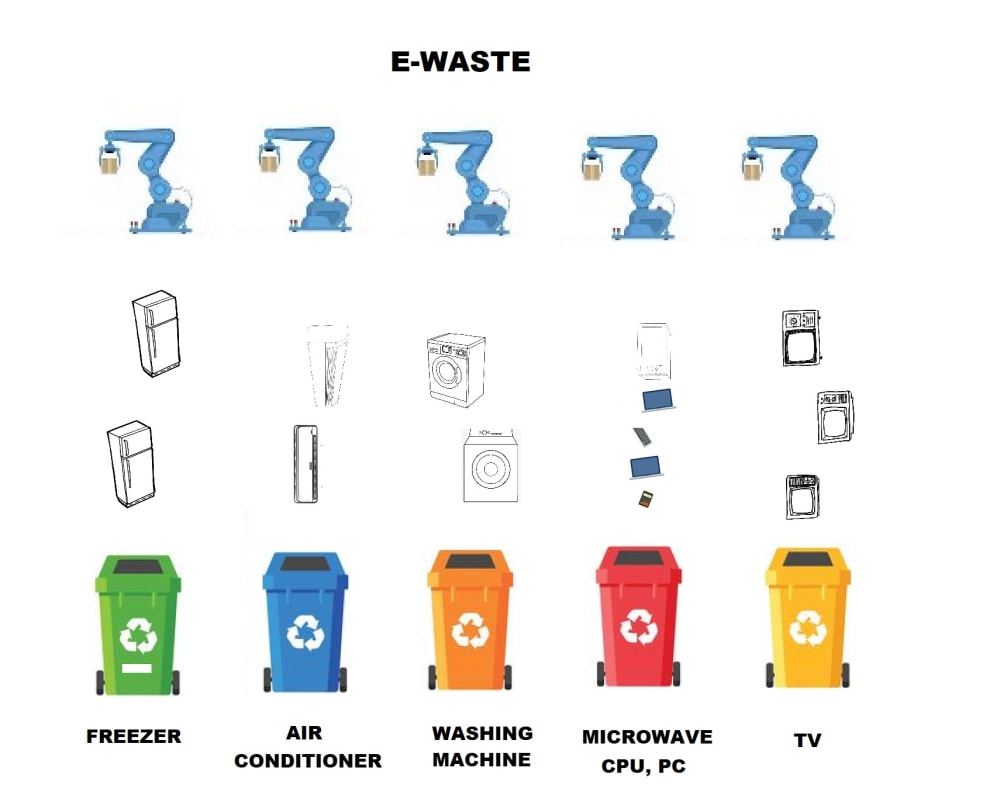PROBLEM:
It is estimated that around 50% of electronic and electric waste is dumped in offices, homes, public entities or warehouses, more than 40% is buried or discarded in garbage dumps and landfills and about 10% enters informal or formal waste management schemes. This represents a waste of resources that could be recovered such as gold, copper, aluminum, ABS plastic, steel, etc., and also a high source of toxicity due to harmful materials that are part of WEEE (Waste Electrical and Electronic Equipment) such as lead, mercury, cadmium, selenium, chromium, manganese -among other heavy metals- and brominated plastics that act as fire retardants, are found within a long list of compounds that, when melted and come into contact with the ground, air or currents of fresh water pollute the environment and cause serious health problems for people.
SOLUTION:
There are private sector companies that receive, collect and recondition disused appliances and then donate or disassemble them to crush their parts and sell them to the refining and recycling industry such as copper, copper alloys, steel, plastics, rubber, etc., there're even companies that buy integrated circuit boards, from which they extract precious metals with advanced technologies.
These treatment companies can be found in distant provinces from the collection and sorting centers. This makes it extremely difficult and expensive to transport electronic waste that can be collected in the peripheral provinces. Thus arises the idea of developing the installation of WEEE recycling plants so that they can receive this type of waste generated in each of the regions.
In order to carry out its treatment, the plant works with 3 lines of work that correspond to the following 3 large groups of devices in disuse:
- Line 1: Refrigeration appliances.
- Line 2: CPU, washing machine and microwave.
- Line 3: TV, CRT, LCD, and LED monitors.
On the plant map, 6 large areas are distinguished:
- Download area,
- Classification area,
- Processing area of the 3 work lines,
- Material storage area,
- Shipping area, and
- Office and service area
It's not just creating WEEE smart plants, but using the most advanced technology to make them faster and more efficient. Advanced technology can assist increase recycling rates and distract from waste disposal helpful resources. Robotics has a prominent position in strengthening a method for further recycling and cost reduction for efficient application of garbage management policies. A robot with two arms can sort 4,000 selections per hour. The design of this plant includes artificial intelligence with Machine Learning and Neural Networks.
Like this entry?
-
About the Entrant
- Name:Guillermo Perez
- Type of entry:individual
- Software used for this entry:Machine Learning, Neural Networks, Python, C++, OpenCV
- Patent status:none





